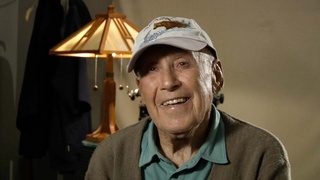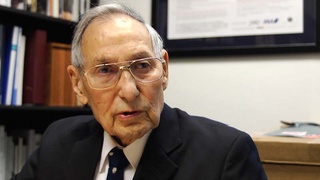Interviews
General Ryder’s faith in the 100th infantry battalion
I think, yes, we were often used in difficult positions because they knew we could do the job, not because they wanted to expend us. In fact in Anzio we didn’t take that many casualties but General Ryder used us to take the key pass when his two regiments had failed to take it. They failed to take Lanuvio and the pass through the Albano Hills - and the First Armor Division was supposed to take advantage of that and make a dash into Rome.
When they failed to take that pass, and one of the regimental commanders was captured, that afternoon he came into the 100th Infantry Battalion - we were a separate battalion, directly under his control - and he told us that we were to take that pass the next morning. And I, as a rather outspoken first lieutenant, cause it was stunned silence, no one else could talk, and I just point blank asked him, I says, “how do you expect one battalion to take a pass where six battalions have failed?” And he very calmly looked at me said, “Because I know the 100th can.” I says, “Well why don’t you commit the 133rd? There’s three battalions.” He said, “Because I question whether they’ll take the path. But you people can.” And we did.
Date: August 28, 1995
Location: California, US
Contributed by: Watase Media Arts Center, Japanese American National Museum
Explore More Videos

Parents expected to be taken by the FBI
(1919-2020) Member of the 1800th Engineering Battalion. Promoted Japan-U.S. trade while working for Honda's export division.

525 Quartermaster Corps
(1919-2020) Member of the 1800th Engineering Battalion. Promoted Japan-U.S. trade while working for Honda's export division.

Fort McClellan soldiers
(1919-2020) Member of the 1800th Engineering Battalion. Promoted Japan-U.S. trade while working for Honda's export division.


Going to camp with the Terminal Island people
(1927-2010) Political Activist


Interned at age fifteen, I saw camp as an adventure
(1927-2010) Political Activist




Reception of Hamako by family
(1916 - 2013) Member of the U.S. Military Intelligence Service




Incarceration, Deportation, and Lawyers
(1938-2020) Japanese American attorney and civil rights activist
